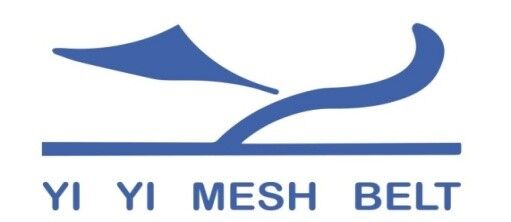
In the vegetable industry, cleanliness and hygiene are of utmost importance. Farmers and producers need to ensure that the vegetables they grow and harvest are clean and safe for consumption. One of the ways they achieve this is by using chain-driven belts for washing vegetables. In this article, we will discuss the benefits of using chain- driven belts in the vegetable industry and how they are used in the washing process.

Introduction to Chain Driven Belts
Chain driven belts are a type of conveyor belt that is powered by a chain. They are commonly used in industrial applications to move products from one point to another. In the vegetable industry, chain-driven belts are used for washing vegetables. The belts are made of a series of plastic or metal links that are connected together by a chain. The chain is driven by a motor, which moves the belt along the conveyor.
Benefits of Chain Driven Belts
Chain-driven belts offer several benefits for washing vegetables. These include:

Efficient Cleaning:
Chain driven belts provide efficient cleaning of vegetables by ensuring that
each vegetable comes into contact with the washing solution.
Cost-Effective:
Chain-driven belts are cost effective compared to other washing methods
as they require less water, energy, and labor.
Versatile:
Chain-driven belts can be used for washing a wide variety of
vegetables, including leafy greens, root vegetables, and fruits.
Hygienic: Chain-driven belts are easy to clean, ensuring that no dirt or debris
is left behind. This makes them an ideal choice for washing vegetables in a hygienic manner.
Reduced Damage:
Chain driven belts are gentle on the vegetables, reducing the risk of damage
or bruising.

How Chain Driven Belts are Used for Washing Vegetables
Chain-driven belts are used in several stages of the vegetable
washing process. Let's take a closer look at how they are used:
Stage 1: Pre-Washing
The first stage of the vegetable washing process is pre-washing. In this stage, the vegetables are washed to remove any large dirt or debris. The chaindriven belt is used to move the vegetables through a water bath. The water is mixed with a cleaning solution to remove dirt and debris.
Stage 2: Washing
After the pre-washing stage, the vegetables are moved onto the chain-driven belt for washing. The belt moves the vegetables through a series of water baths that are mixed with a cleaning solution. The cleaning solution removes any remaining dirt or debris and ensures that the vegetables are thoroughly washed.
Stage 3: Rinsing
Once the vegetables have been washed, they are moved onto the rinsing stage. The chaindriven belt moves the vegetables through a series of water baths to remove any remaining cleaning solution. The water is usually mixed with a sanitizing solution to ensure that the vegetables are hygienic.
Stage 4: Drying
The final stage of the vegetable washing process is drying. The chain-driven belt moves the vegetables through a drying tunnel where they are dried using hot air.

Conclusion
In conclusion, chaindriven belts are an effective and efficient way of washing vegetables in the vegetable industry. They offer several benefits, including efficient cleaning, costeffectiveness, versatility, hygienic washing, and reduced damage. The vegetable washing process typically consists of pre-washing, washing, rinsing, and drying stages. Chain-driven belts are used in each of these stages to ensure that the vegetables are thoroughly cleaned and ready fo FAQs:
How do chaindriven belts compare to other washing methods for vegetables?
Chaindriven belts are costeffective and efficient compared to other washing methods for vegetables as they require less water, energy, and labor.
Can chaindriven belts be used for washing all types of vegetables?
Yes, chaindriven belts can be used for washing a wide variety of vegetables, including leafy greens, root vegetables, and fruits.

How are chain-driven belts cleaned after use?
Chaindriven belts are easy to clean and can be washed down with water and a cleaning solution to ensure that no dirt or debris is left behind.
Are chain-driven belts gentle on vegetables?
Yes, chaindriven belts are gentle on vegetables, reducing the risk of damage or bruising.
What is the final stage in the vegetable washing process?
The final stage in the vegetable washing process is drying, where the vegetables are moved through a drying tunnel using a chaindriven belt and dried using hot air.r consumption.
#conveyorbelts #meshbelt #metalconveyors #conveyorbelts #freezing #spiralbelts #eyelinkbelts #conveyor #belts
CONTACT
We're here help every step of the way.
Related Products
 How Trapezoidal Mesh Belt Is Used for Chocolate Coating Production Process
How Trapezoidal Mesh Belt Is Used for Chocolate Coating Production Process How Spiral Wire Mesh is Used in the Production of Poultry Processing
How Spiral Wire Mesh is Used in the Production of Poultry Processing If you are replacing the original metal wire belt, what parameters do you need to provide
If you are replacing the original metal wire belt, what parameters do you need to provide Chain Type and Model for Chain Driven Wire Mesh Metal Conveying Production
Chain Type and Model for Chain Driven Wire Mesh Metal Conveying Production How metal conveyor belts are used in the ready meal industry
How metal conveyor belts are used in the ready meal industry What Type of Metal Mesh Belt Can Be Used for Quick Freezing of Shrimp and Fish
What Type of Metal Mesh Belt Can Be Used for Quick Freezing of Shrimp and Fish Spiral Freezer Mesh Belt Used for Cooling Operations in the Baking Industry
Spiral Freezer Mesh Belt Used for Cooling Operations in the Baking Industry Applications and Advantages and Disadvantages of Metal Chain Plate Belt
Applications and Advantages and Disadvantages of Metal Chain Plate Belt
Message








